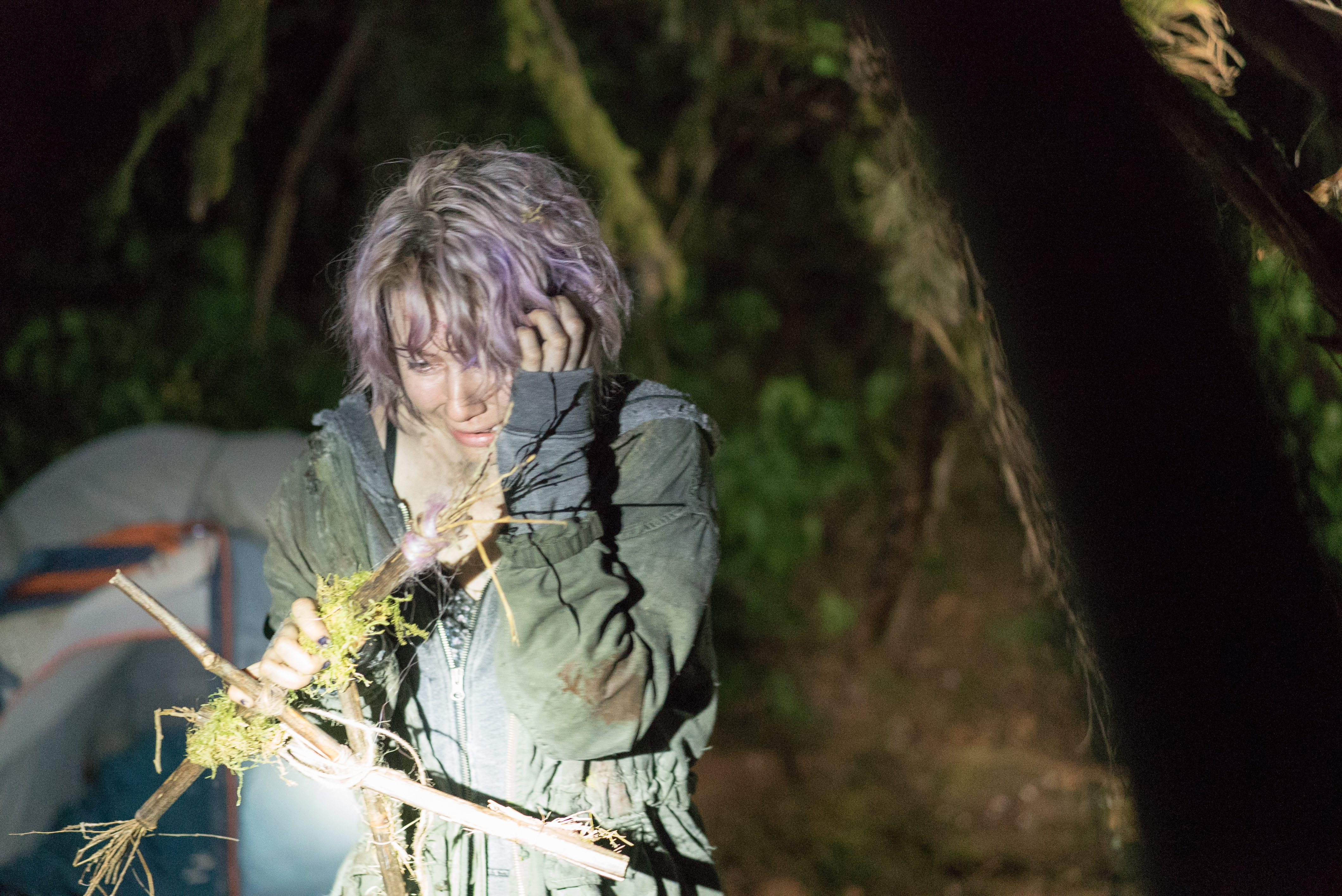America has a horror movie problem
We're tired of boring horror movies. Give us something new, please.


American horror movies are suffering from an affliction of sameness and staleness.
These movies, particularly those that go for an "old school" aesthetic (i.e. The Conjuring), rely on familiar tricks and tropes to lure viewers into complacency. You recognize the allusions, you congratulate the movie and yourself. Critics and horror aficionados, desperate for good movies, heave praise at mediocre movies (i.e. The Conjuring) just because they aren't utterly inept, not unlike how characters in the Scream movies throw household appliances at Ghostface. Even the way we talk about horror suggests that we like seeing movies that remind us of other movies — "It's Rosemary's Baby by way of Dario Argento," "It's the best devil movie since The Exorcist," "It's a John Carpenter-style blah blah blah." It's all so familiar.
For every experimental indie horror film like Unfriended, there's a Don't Breathe, the best-reviewed horror movie of the summer. It's basically a cleverly directed reiteration of Wait Until Dark with a PTSD-stricken crazy man playing Audrey Hepburn and a lazy psycho-sexual twist. It's by no means bad, and has certain admirable qualities (director Fede Alvarez, who helmed the brutal Evil Dead remake, has an impeccable understanding of space), but we've seen — and heard — this before.
The Week
Escape your echo chamber. Get the facts behind the news, plus analysis from multiple perspectives.

Sign up for The Week's Free Newsletters
From our morning news briefing to a weekly Good News Newsletter, get the best of The Week delivered directly to your inbox.
From our morning news briefing to a weekly Good News Newsletter, get the best of The Week delivered directly to your inbox.
Blair Witch, the much-belated sequel to the 1999 phenomenon The Blair Witch Project (they're wisely eschewing the better-left-forgotten Book of Shadows: Blair Witch 2), was directed by Adam Wingard, one of the two most popular charlatans of modern horror. Wingard's You're Next, a home invasion thriller about men in plastic animal masks killing people with various objects, was heralded as a return to an "old school" style of horror, which is not inaccurate. It checks all the boxes: Men in masks, yes. Knifes and axes, yes. Blood, oh yes. A final girl who kicks copious amounts of ass, yes yes. How brilliant! His follow-up, The Guest, is basically a synth-saturated soundtrack with a bland movie attached.
Wingard's Blair Witch, which opens today, is a fascinating movie not because it's in any way new or daring — it's not, and its ideas and observations on the ubiquity of recording devices are never expounded upon — but because it's a rehash of one of the most daring American horror movies, one that has already been rehashed many times, from Paranormal Activity to REC and its American remake Quarantine, and the anthology films V/H/S and V/H/S 2, on which Wingard worked. The original Blair Witch Project is an epochal work of art, with the actors doing the camerawork themselves while the directors lurk in the woods like evil presences, manipulating, influencing. It plays with the notion of a director, of narrative. It's that rare movie that dares to try something new and, for its troubles, was rewarded with a deluge of ersatz imitations that ape its style but not its bravado. If it didn't really engender the found-footage genre, it undeniably brought an underground approach to filmmaking into the mainstream.
The other harbinger of unimaginative horror, James Wan, who will soon be a Marvel Cinematic Cog, became an instant horror trend-setter with Saw (2004). It spawned a half-dozen progeny and, along with Eli Roth's Hostel, can be blamed for giving us the torture-porn genre, which appealed to moviegoers tired of PG-13 Japanese-horror-inspired movies and relished the throwback grindhouse gore. Wan's non-indie horror offerings channel "classic" horror styles, so if you know the cinematic language of horror, you can count the beats until every scare. When you inevitably jump, it's because the movie is a piece of systematically calibrated machinery instead of a piece of art. While more formally accomplished than Wingard, Wan is just as content to make the same movies he watched as a kid. He uses the same stories, same camera movements, same jump-scare tactics that John Carpenter used 40 years ago. It's fitting that his Insidious became a hit in 2010, the year Carpenter made his failed comeback The Ward, which was chastised for being the same thing Carpenter had done before.
Homage doesn't have to be lazy or self-congratulatory. Rocker-turned-auteur Rob Zombie similarly channels older horror movies, but his best efforts (i.e. the oneiric Lords of Salem, which barely made back its $1.5 million budget), present a unique vision, or at least have personality. His films look like "classic horror" filtered through the subconscious of a psychopath — he wears his influences like blood stains. Akin to Quentin Tarantino, Zombie exhumes bits and pieces from old movies to cobble together Frankenstein fright flicks that, like that famous hodgepodge monster, have a serious mean streak. But even Zombie has fallen victim to the nostalgic affliction with his newest, 31, which is more akin to Wingard and Wan. It's a movie beholden to its influences, and it has been ravaged by the few who've seen it so far.
A free daily email with the biggest news stories of the day – and the best features from TheWeek.com
This year, there have been two indie horror films that refuse to look, sound, or feel like any other movie, yet both are, in their own ways, familiar. They present a beautiful contradiction to my argument. Both films are labors of passion, and both are about witches, that most classic of fictional horrors. Robert Eggers' The Witch, a panic attack in Old English, debuted at Sundance, of all places, where it stood out like a Protestant in a Catholic cathedral. It doesn't harken back to old school witch movies but back to literal old school witches — or the paranoia that conjured up such ideas. It's a brooding arthouse film steeped in the muck of Calvinist hypocrisy that so dauntlessly tries to transport you to 17th century New England, you can almost smell the rot of the decaying farm, feel the grit and dirt on your skin.
The year's other audacious witch movie is Anna Biller's The Love Witch, not so much a horror movie as it is an absurdist vivisection of gender roles in witch's garb. Like The Witch, Biller's film presents the undiluted vision of its progenitor, who wrote, produced, directed, designed the sets and costumes, and cut the film on 35mm, which is almost unheard of today. Yet, the movie looks purposefully familiar. It's saturated in the aesthetics of 1950s and '60s Technicolor horror movies, from the use of overly hard-lighting to rear-projection to garish clothes and stilted acting, which is Biller's way of mocking a lack of progress in modern gender norms. The Love Witch looks like nothing else from this decade, but could be culled from a time capsule circa 1959. Unlike Wan and Wingard, Biller's film uses its influences to say something. That's what homage should do.
Greg Cwik is a writer and editor. His work appears at Vulture, Playboy, Entertainment Weekly, The Believer, The AV Club, and other good places.



